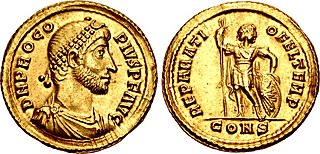 W
WJulian's Persian expedition was the last undertaking of the Roman emperor Julian, begun in March 363. It was an aggressive war against the Sasanian Empire ruled by Shapur II.
 W
WArdashir II, was the Sasanian King of Kings of Iran from 379 to 383. He was the brother of his predecessor, Shapur II, under whom he had served as vassal king of Adiabene, where he fought alongside his brother against the Romans. Ardashir II was appointed as his brother's successor to rule interimly till the latter's son Shapur III reached adulthood. Ardashir II's short reign was largely uneventful, with the Sasanians unsuccessfully trying to maintain rule over Armenia.
 W
WThe Battle of Ctesiphon took place on May 29, 363 between the armies of Roman Emperor Julian and an army of the Sasanian Empire outside the walls of the Persian capital Ctesiphon. The battle was a Roman victory, but eventually the Roman forces found themselves unable to continue their campaign as they were too far from their supply lines.
 W
WThe Battle of Samarra took place in June 363, during the invasion of the Sasanian Empire by the Roman Emperor Julian. After marching his army to the gates of Ctesiphon and failing to take the city, Julian, realizing his army was low on provisions and in enemy territory started marching towards Samarra.
 W
WJulian was Roman emperor from 361 to 363, as well as a notable philosopher and author in Greek. His rejection of Christianity, and his promotion of Neoplatonic Hellenism in its place, caused him to be remembered as Julian the Apostate in Christian tradition.
 W
WProcopius was a Roman usurper against Valens, and a member of the Constantinian dynasty.
 W
WShapur II, also known as Shapur the Great, was the tenth Sasanian King of Kings (Shahanshah) of Iran. The longest-reigning monarch in Iranian history, he reigned for the entirety of his 70-year life, from 309 to 379. He was the son of Hormizd II.